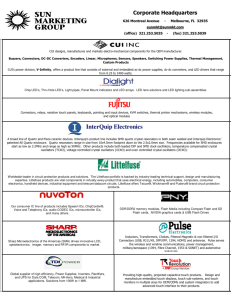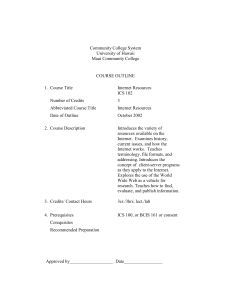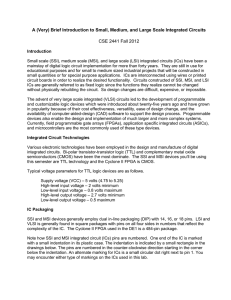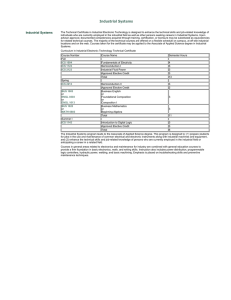Digital Electronics
advertisement
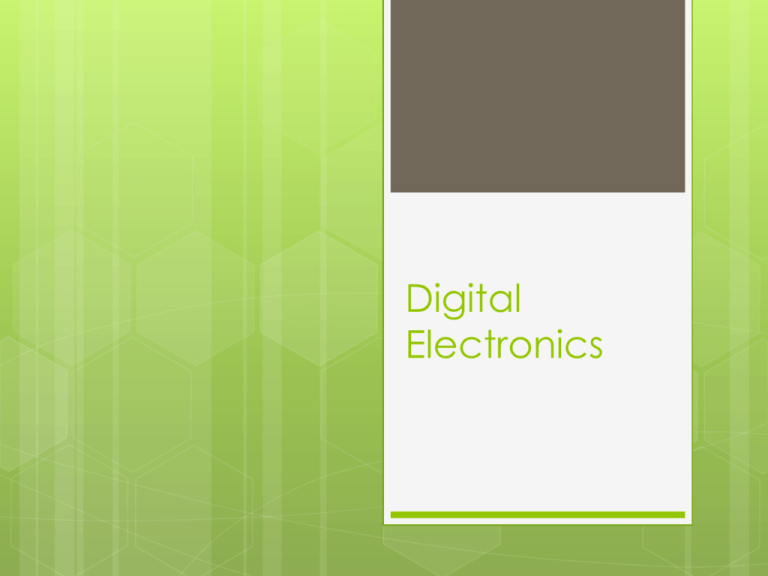
Digital Electronics Digital electronics, or digital (electronic) circuits, represent signals by discrete bands of analog levels, rather than by a continuous range. All levels within a band represent the same signal state. Relatively small changes to the analog signal levels due to manufacturing tolerance, signal attenuation or parasitic noise do not leave the discrete envelope, and as a result are ignored by signal state sensing circuitry. In digital devices, there re only two values, usually referred to as 0 and 1. 1 - there is a voltage (usually 5 volts) 0 – means there is no voltage or 0 volts. Integrated Circuits (ICs) An electrical layout etched on thin, small, layers of semiconductor materials, incorporating or integrating various components inside, with the result of having a single device perform a particular function. Advanatges of ICs It can incorporate several functions and circuitry in one small thin rectangularshaped object. It has low power consumptions. Disadvantages of ICs When it becomes damaged, you cannot repair it. You have to replace it. It is sensitive to static electricity. It can easily be damaged by it. The sensitivity of IC makes it important to provide the proper packaging and storage for it. Families of ICs ICs can be classified into many groups, and the ones below are groupings of the various integrated circuits: Number of components Packaging Function Types of ICs - Function General - Purpose ICs Some ICs were designed for ordinary use. Hybrid - ICs Created by some who would like to combine functions of several general purpose ICs and put them in a single IC. Application Specific Intergrated Circuits (ASIC) The entire purpose of this device will be placed in one chip.





